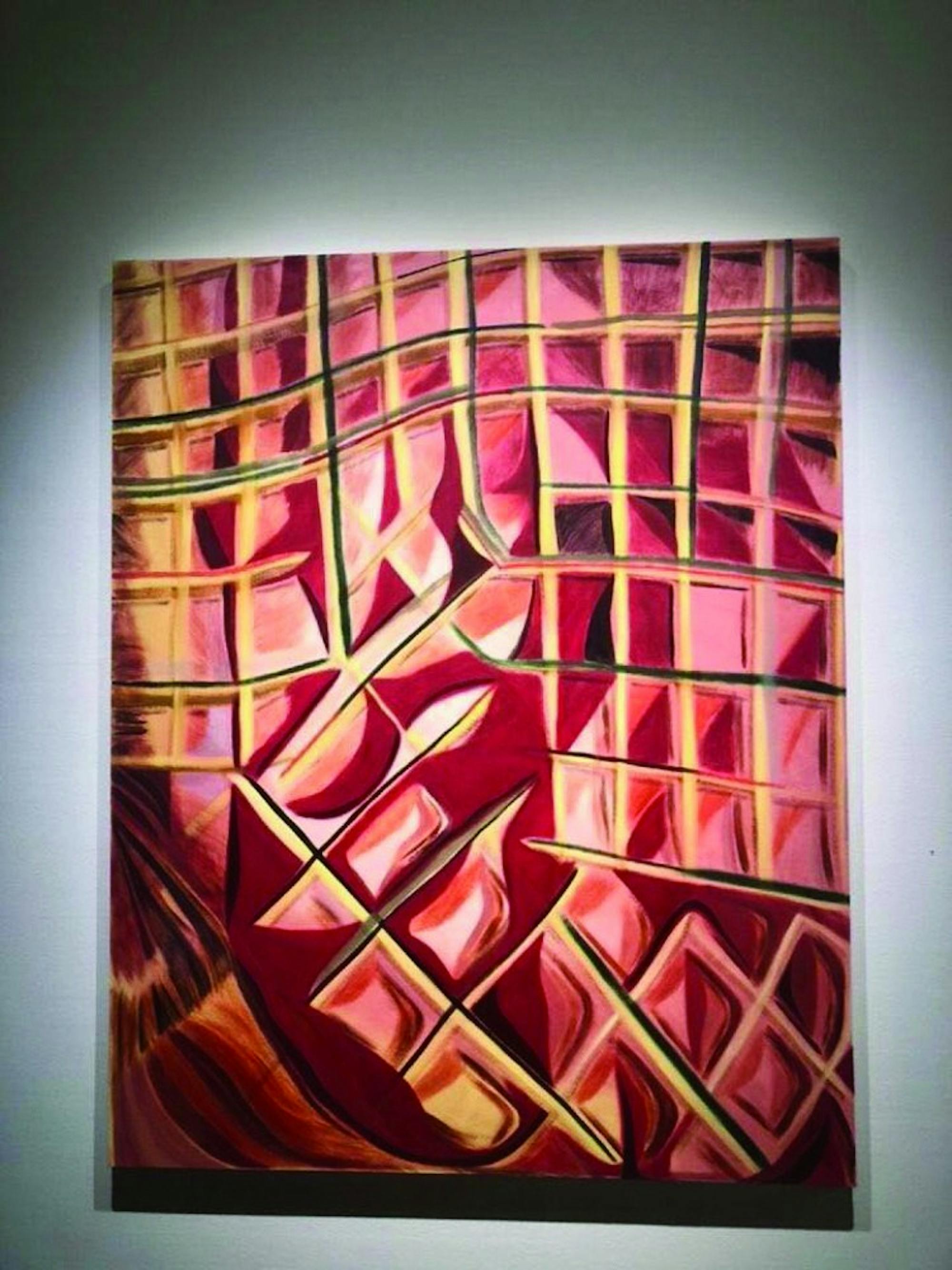Painter Lucy Mink, whose exhibit opened on Tuesday, is this fall’s artist-in-residence. Known for her contemporary exploration and manipulation of the modernist style, Mink’s work has earned critical acclaim.. Mink is the recipient of a 2012 grant from the Pollock-Krasner Foundation in New York, and was awarded the 2007 Best of Show from the BAG Gallery in Brooklyn, New York. Born in Oakland, New Jersey, Mink now resides in Contoocook, New Hampshire.
Primarily using oil on canvas or linen, the works in exhibit at the Hopkins Center for the Arts were created in 2018, save for “Winner,” which was painted in 2016.Mink’s paintings, which are mostly abstract, are named using evocative statements, including, “So I turned myself to face me” or “Coming in last.” The combination of her titles with the vivid imagery of the paintings creates an almost contemplative atmosphere, as if the artist is coming to terms with certain thoughts through her work. With bold colors, ambiguous shapes, distinct titles and a unique artistic signature, Mink’s work is also distinct in its imprint on the senses. Her complex style and technique have resulted in a truly transportive series of works, showcasing an element of her psyche as well as technique.
In her personal artist’s statement, Mink wrote, “I am consumed by combinations of color and form as a visual, abstract diary of my life, where time does not belong to me, but to others. I am frequently organizing their things while they dance. I am in a situation.”
In the gallery book for Mink’s exhibit, artist Lisa Beckalso wrote about the sensory impact of Mink’s work and on how the viewer should engage with the pieces.
“You can get glimpses of an image, of an environment, but you have to put it together on your own to see how they connect,” she wrote.
Each term, a committee of nine studio art faculty members convene to nominate artists and decide who will be invited to campus for a ten-week stay.
Enrico Riley, studio art professor and chair of the department said that because it is common for professors to incorporate campus events and programs into their courses, many students in studio art classes this fall may be visiting the exhibit before the term ends.
“The purpose [of these residencies] is for edification,” Riley said. “It is for students to get exposed and to see in the flesh the varying kinds of art.”
Gerald Auten, studio art professor and director of exhibitions, also said it was important to have student exposure to the artists themselves as well as their work.
“When I teach, I always have my class visit the gallery with the resident,” he said. “These are world-class artists, so it is nice for the students to be able to ask really candid questions.”
Students’ access to residents is not limited to formal campus events. Each resident who stays on campus for the length of the ten week term receives an email address through which students can contact them directly, Auten said.
Auten and Riley both said they encouraged students from all departments, not just the studio art department, to reach out to the artist-in-residence.
“I’d encourage anybody, even if they’re chemistry majors, to blitz the artist-in-residence and meet them,” Auten said. “Sometimes, those are really interesting meetings. Anything can happen.”
Mink’s exhibition will be on display in Jaffe-Friede Gallery until Nov. 13.




